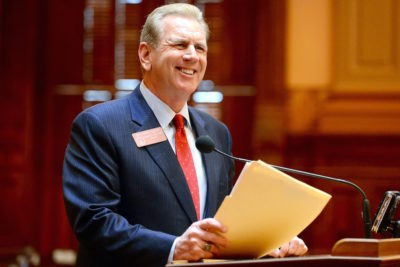
As I’ve noted on a number of occasions, one of the biggest challenges facing the Georgia House Rural Council is in the area of health care. In a previous column I wrote about the opioid crisis and the devastating effect it has had on our state, and now we’ll take a look at rural hospitals and health care facilities and the multitude of problems they face.
Here’s the sad reality as told by the numbers. According to the rural health advocacy group, Hometown Health, in order to operate and successfully sustain a hospital, a County must have at least 40,000 people. Even then, it’s a challenge. Georgia has 159 counties, and 110 of those counties have less than that required number. There are 61 rural hospitals in Georgia, but only 5 are located counties of 40,000 people. As a matter of fact, almost 50% of those other 36 hospitals are located in counties with less than 20,000 people. When you do the math, you see how dire the situation is.
Even when there is a county of over 40,000 people there are no guarantees. Habersham Medical Center is a prime example of this. Our hospital is one of the five rural hospitals that meet the population criteria, and it is no secret that they are hurting. Despite concerned and competent management from the Hospital Authority and staff, they are expected to lose over $1.5 million for the past fiscal year which ended on June 30th. This is in spite of severe cuts in both money and staff and the county commission making the bond payments each month to keep the hospital operating. The good news is that, despite these sharp cuts in spending, the level of care and treatment has never dropped and as a matter of fact, in some cases, may have even improved. That’s the primary reason that Habersham Medical Center has opened negotiations with Northeast Georgia Medical Center. This partnership allows HMC to become a vital hub in continuing to provide healthcare for our area while also remaining an economic asset for the county. It makes good sense for both organizations, and serves as a model for the rest of the state to look at . Many rural hospitals will have to work together and consolidate if they want to survive.
Unfortunately, not every area has the option of partnering with a major provider. There will be some that will still be left in limbo unless something is done. Governor Deal’s Rural Hospital Stabilization Committee is also working to address the issue. They are looking at new and creative financing options for rural area hospitals and exploring the possibility of those hospitals and possible emergency treatment centers serving as hubs for their neighboring counties. Right now, seven hospitals are already participating in the program with another twelve recently being added. There is a good possibility that this hub system may be the future of rural health care as we know it.
One thing is evident. Georgia can no longer wait on the federal government to provide guidance. This year’s legislative session will immediately go to work to address our hospital issues, and to make certain that adequate healthcare is available to all Georgians. Even if the federal government was to eventually agree on a plan, Georgia does not have the luxury of time being on our side. My good friend Rep. Jay Powell, who co-chairs the Rural Council has summed up the federal government’s lack of action well: “They don’t know what they want to do…. hopefully they’ll do something that makes sense, but if we wait on them we’re going to lose another eight hospitals.” Like Rep. Powell, that’s not an option I want to consider.






